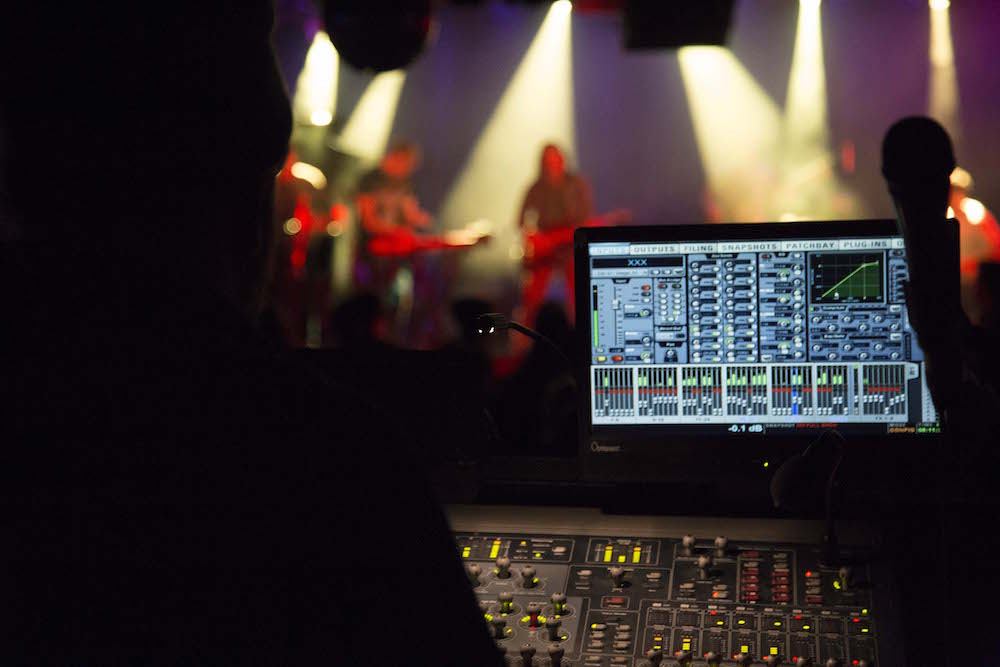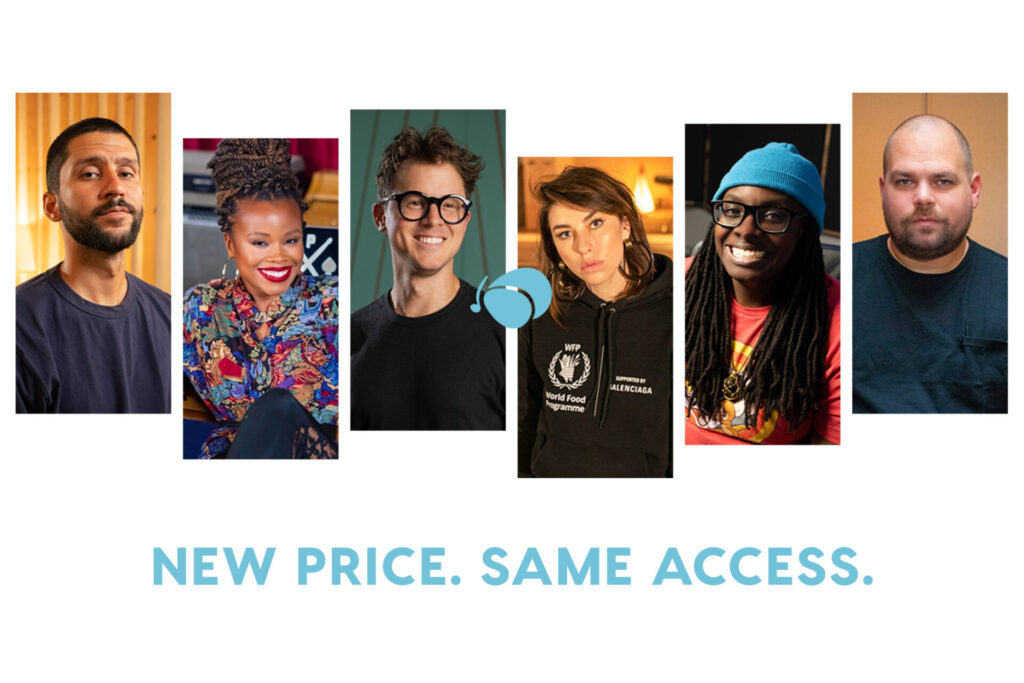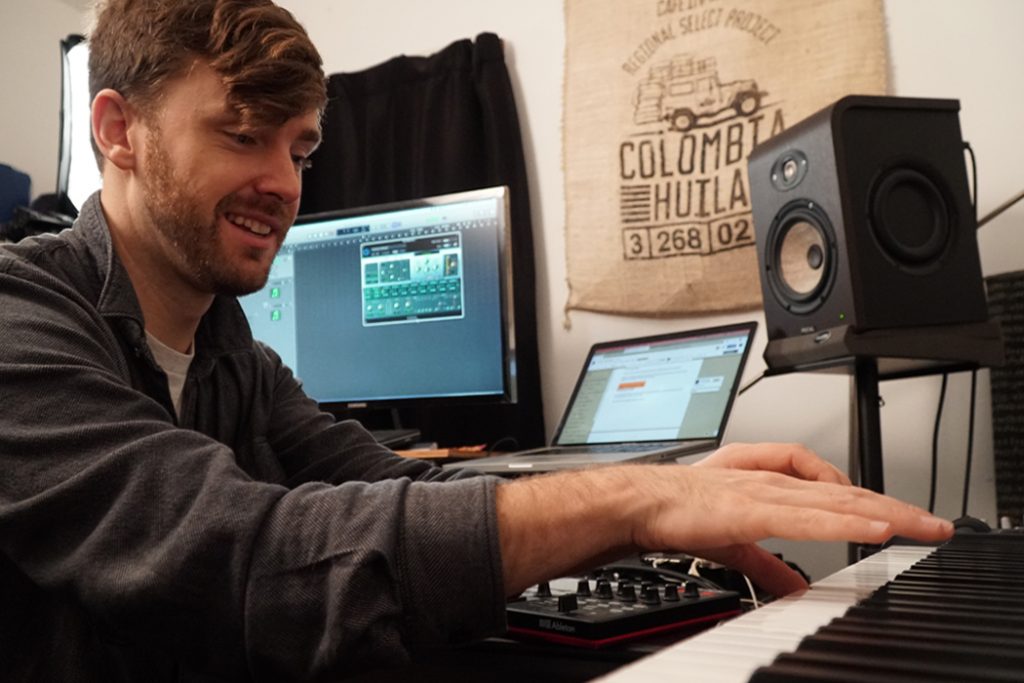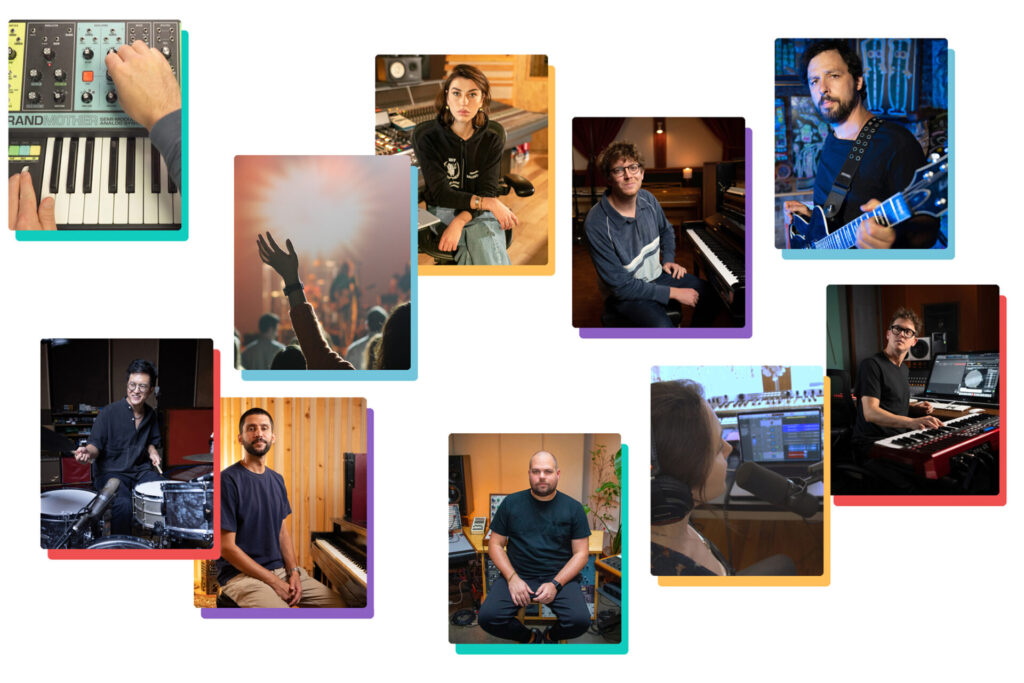About a month and a half ago, we decided, along with our friends at (le) poisson rouge, to throw a different sort of concert.
So often, I find myself going to shows where the audience feels like an after-thought — a necessary prop to fulfill the musicians’ goals of playing in public rather than the whole point of the thing. We wanted to throw a different kind of show, really focused on creating an experience for the audience, one that would be entertaining but also leave them inspired to explore different types of music in the future, both within themselves and the larger world.
Needless to say, as we set out with only about a month to bring this event together, it was a pretty big challenge we’d set for ourselves. Specifically, some of the very obvious obstacles were:
- (le) poisson rouge is quite a big venue, with enough room for some 700+ attendees
- As a start-up that hasn’t even launched yet, we don’t have an enormous community yet (though it’s growing daily!)
- NYC is the toughest place in the world to throw a big event because there’s so much to compete with every single night of the week
- It’s winter and people don’t want to leave their houses (compound that with the blizzard that just hit us!)
- As a brand, we haven’t yet established our credibility such that people know about us and will show up of their own accord
- One month is not a ton of time to promote
Despite these challenges, we wanted to give it a try, we had a ton of support from the people at LPR, and we knew we could give people a unique evening of music — so we went for it anyway.
Skipping ahead, the show is now tomorrow night, and it’s going to be amazing. We’ve got some truly amazing acts lined up, some great partners promoting the event, and a growing list of attendees.
(If you haven’t yet bought your ticket, do so now! Use the promo code SNOWSALE for a 25% discount!)
But in advance of tomorrow, I wanted to quickly detail some of the things we’ve been doing to make this show a success. Throwing a great concert is one of the most challenging things to do and yet something that all musicians have to do, again and again and again. Here’s how we went about it.
Step 1: Create a Unique Event
The most important thing for us out of the gate was to do something totally different from your normal Wednesday evening concert. Whether we had just one person there or 700, we knew we had to give them a powerful experience that spoke to our brand and who we are.
In putting together the line-up and flow of the evening, we took inspiration from ?uestlove’s Shuffle Culture at BAM a few years ago, where he managed to curate this surprising, delightful, almost block-party-esque evening of non-stop music. So we set out to do something similar. You can tell us tomorrow whether or not we managed to succeed, but with the likes of Delicate Steve, Julia Easterlin, Evolfo, Chesney Snow and the Stone Forest Ensemble playing, I think we’re on the right track. When we reached out to them, most of the artists were excited to be part of a different sort of evening like this.
I was particularly excited when Delicate Steve jumped on board, as they really have a unique sound that’s both accessible and interesting — exactly the sort of thing we’re trying to help aspiring musicians all over the world discover in themselves. Plus, his whole booking team — Mat Hall Agency and Panache Booking — have been a total delight to work with.
Step 2: Spread the Word
Once we figured out our line up, it all came down to getting the word out there. Not surprisingly, this is the most challenging part. Here’s a list of some of the stuff we’ve done:
- Created a Facebook event and invited everyone we know
- Made a short, fun, sharable video and promoted it on Facebook to New Yorkers
- Sent out multiple emails to our Soundfly mailing list (and, for me, my personal mailing list)
- Created a poster and put it up around town
- Coordinated with (le) poisson rouge to make sure we take full advantage of all the promotions they do (mailing list, featured banner on their website, outreach to partners, etc)
- Posted an interview with one of our performers (Chesney!!!) on our website
- Hired a PR agency called Grandstand to help us get some coverage on local blogs and show listings
- Coordinated with all the bands to make sure they always had the latest materials, links, and updates to share with their fans
All of this stuff basically served to get us past GO. We didn’t get as much specific coverage as we hoped, but we did get placed in a whole bunch of listings, from Time Out NY to Pancakes and Whiskey and a few others. Grandstand used the idea of a contest for free tickets to try to promote the event, which landed some additional coverage.
From the PR to the Facebook ads, we did up spending some money on promotions, but for us, it was an easy decision. We felt like we really needed it to get our name out there, at this early stage in our brand’s existence. We’re still figuring out where a few dollars can make the most difference — I’d love your take on it — but these activities felt like relatively small expenses that could have a potentially big impact.
Step 3: Targeted Outreach
Despite all this, we still knew we had a lot more to do to get people in the door. This is where really targeted outreach comes in — focusing specifically on individuals and audiences that we think could give us the biggest bang for our buck.
We targeted a few distinct types of people in particular: 1) specific fans of the artists, 2) journalists who’ve written about the artists before (or whom we already know), and 3) other influencers that we are either connected to or might have an interest in this sort of thing. We found Twitter and/or email to be the most successful ways of connecting with these people and getting their attention, and when appropriate, we also offered complementary tickets to the show to encourage people to share about it.
Step 4: Going That Extra Step
This week, as snowstorm Juno descended upon New York City, we held a quick meeting where everyone on the team had to come up with at least five more ideas for things we could do to promote the event. Following that brainstorm, we created a limited promo code (SNOWSALE) for discounted tickets to encourage people to get off the fence despite the snowy conditions and come to the show.
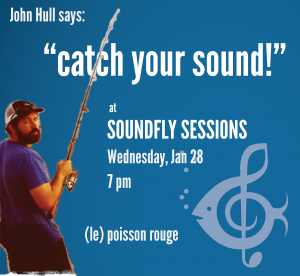
Since then, we’ve been sharing that promo code as a last incentive to get people currently on the fence to purchase tickets in advance. It also just gives us another reason to talk about the event.
We also all changed our profile pictures to something having to do with the show, like this one here.
Step 5: Setting Up for the Future
At the end of the day, this is our very first event like this, but we hope it will be the first of many. Because of that, it’s been a priority to make good relationships with everyone involved so that we can hopefully work with them again. It’s a good reminder that everyone — from the acts to the promoters to the venue — is just out to put on the best show they can, and treating everyone with respect on all sides can really set the tone for a good partnership.
We feel like so far we’ve accomplished this, and I hope that everything comes off without a hitch tomorrow. But it’s nice to know that people are out to help, especially if you make it easy for them to do so.
Lessons Learned
Honestly, I’m going to have to revisit this question for Thursday. But overall, here are some of the quick takeaways:
- Incentivize Advance Ticket Sales. Advanced ticket sales are hard, so it really makes sense to try to incentivize early ticket sales, whether through discounts, promotions or extra gifts to people who purchase ahead of time.
- Target Influencers. Focus on finding some influencers who will be willing to spread the word for you, and offer them a good reason to do so (like 2 free tickets). This is not about spamming everyone you can find, but finding one or two really solid partners and making it worth their while.
- Don’t Sit Back or Assume Others Will Do the Work. The times we’ve felt nervous about the show are when we’ve relied too much on the venue or the other acts to bring in the audience. Sure, they are doing a lot to help that effort, but it’s really up to you if you want to make the event a big success. Also, if you’re working really hard, it makes it more likely that they will help you when you ask for it.
- Show People Respect. At the end of the day, most people want the same thing as you do — to put on a great event. It’s ridiculous how often, as a musician, I’ve gotten in fights with bookers or venue managers which are really unnecessary and could be easily avoided by a little respect.
What do you think? Do you all have any lessons you’d be willing to share with us about successes and failures you’ve had in promoting your events and concerts? We’d love to hear about them — post them in the comments below!
And if you haven’t yet…
